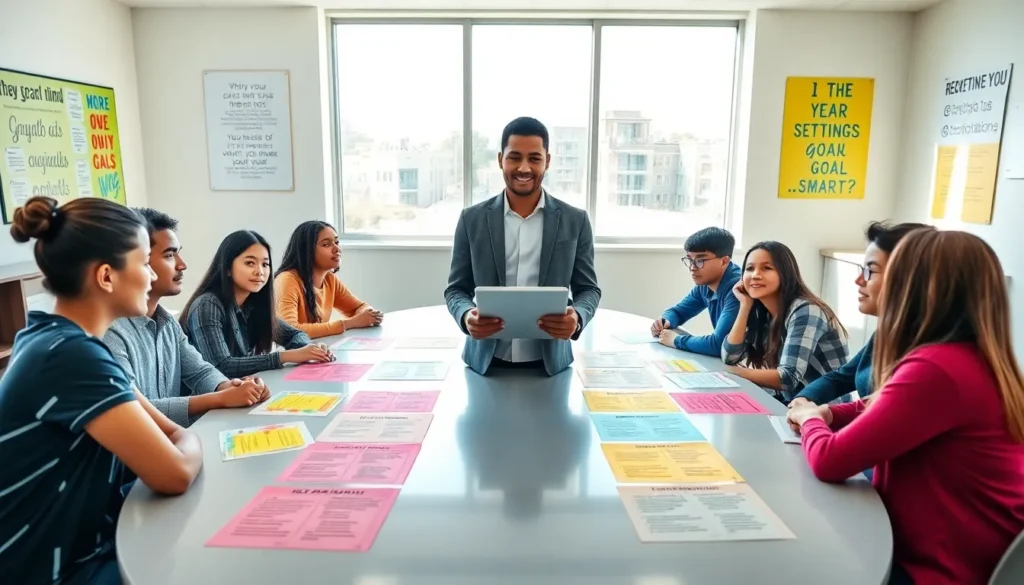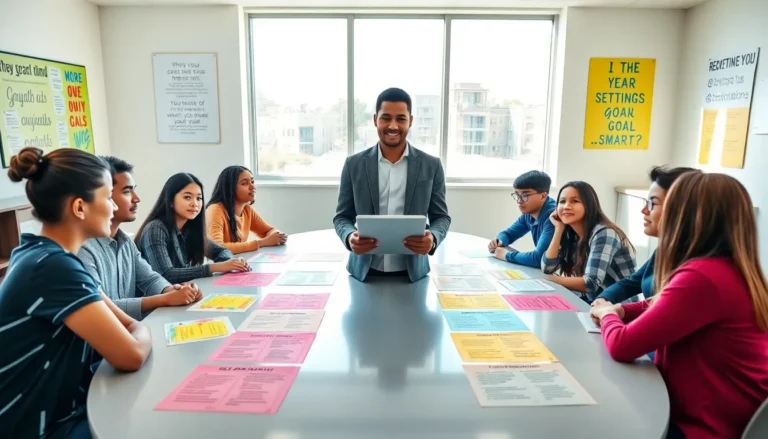Table of Contents
ToggleGoal setting is like GPS for students navigating their educational journey. Without it, they’re just aimlessly wandering through a jungle of assignments and deadlines. So, why should a student care about setting goals? Well, they help create focus, measure progress, and boost motivation. It’s the secret sauce to turning aspirations into reality. Now, let’s explore how to make goal setting not only effective but also a little fun. After all, who said achieving dreams couldn’t involve a bit of humor?
Understanding the Importance of Goal Setting

Goal setting is not just a buzzword thrown around in motivational speeches: it’s a fundamental skill for students that can lead to lasting success. When students set goals, they clarify their vision, giving them a roadmap to follow. This clarity reduces anxiety and increases focus. Research shows that people who set clear goals are more likely to achieve them. This isn’t merely a coincidence: it’s backed by psychology. Goals help students prioritize tasks, leading to better time management and overall academic performance.
Also, these goals provide a solid foundation for resilience. When faced with challenges, they can refer back to their objectives to remind themselves of their purpose. A student who wants to improve their math grade has a compelling reason to hit the books, overcoming even the toughest hurdles. So, understanding the importance of goal setting is the first step toward effective student success.
Types of Goals for Students
Students can benefit from various types of goals, each serving a specific purpose. Broadly, these can be broken down into three main categories: academic, personal, and career goals.
- Academic Goals: These include grades, coursework, and knowledge acquisition. A student might aim to achieve an A in a particular subject or master a complex topic.
- Personal Goals: These focus on character development and skills outside the classroom. Whether it’s learning a musical instrument or participating in community service, personal goals contribute to a well-rounded individual.
- Career Goals: Even students have career aspirations. When they set these goals early on, they can start exploring potential fields of interest and make informed decisions about their education and extracurricular activities.
By understanding and categorizing these goals, students can channel their energies more effectively.
The SMART Criteria for Effective Goal Setting
To make goal setting effective, students should consider the SMART criteria. This framework ensures that each goal is:
- Specific: A specific goal provides clarity. Instead of saying, “I want to study math,” a student could say, “I want to solve five algebra problems daily.”
- Measurable: Goals should be quantifiable. This allows students to track their progress and celebrate small wins. For instance, aiming for a 90% average over the semester is measurable.
- Achievable: Goals need to be realistic. If a student struggles in math, aiming for a 100% might not be feasible, but improving from a C to a B is much more manageable.
- Relevant: Each goal should matter to the student. They should relate to their interests or future aspirations, keeping motivation high.
- Time-bound: Setting a deadline creates urgency. Whether it’s a week, a month, or a semester, time constraints encourage students to stay focused.
Applying these criteria transforms vague aspirations into actionable plans.
Strategies for Setting and Achieving Goals
Effective strategies can transform goal setting from a simple exercise into a powerful tool for success. Here are some tried-and-true methods:
- Write It Down: Research shows that people who write down their goals are much more likely to achieve them. This simple act commits the goal to memory and serves as a daily reminder.
- Create an Action Plan: Break larger goals into smaller, manageable tasks. For example, if the goal is to complete a project, outline the necessary steps and deadlines to keep on track.
- Visualize Success: Encourage students to picture what achieving their goals looks like. This mental imagery can boost motivation and enhance belief in their capabilities.
- Find a Mentor or Buddy: Working with someone can foster accountability. A buddy system motivates students and provides opportunities for discussion and encouragement.
- Adjust as Necessary: Life is unpredictable. If something isn’t working, it’s crucial to reassess and adapt the goals or strategies accordingly. Flexibility can often lead to better results.
Using these strategies, goal setting becomes not only straightforward but also incredibly effective.
Overcoming Common Obstacles to Goal Achievement
Even the most determined students face obstacles. Understanding these challenges is the first step to overcoming them. Here are common hurdles and strategies to navigate them:
- Procrastination: This sneaky habit affects many students. To combat it, setting mini-deadlines and prioritizing tasks can help them stay on track.
- Fear of Failure: Students may shy away from ambitious goals due to fear. It’s important to reframe this perspective. Mistakes are stepping stones toward success, not roadblocks.
- Lack of Motivation: Sometimes, the spark just isn’t there. Students can reignite their passion by reminding themselves why the goal matters to them, either through visualization or by sharing their goals with friends or family.
- Distractions: In today’s digital age, distractions abound. Creating a dedicated study space and setting limits on social media can help students maintain their focus.
- Unrealistic Goals: Students must reassess their goals regularly. If a goal feels overwhelming, breaking it down can make it more accessible.
Monitoring Progress and Adjusting Goals
Monitoring progress is essential for maintaining motivation. Students should frequently check in with their goals and assess what’s working and what isn’t. One effective method is to keep a journal or digital tracker of their achievements.
They can reflect on their process weekly, asking questions like:
- Am I moving closer to my goal?
- What strategies have been effective?
- Where can I improve?
This ongoing evaluation will help them adjust their goals as necessary. If a student realizes they’ve consistently achieved a particular goal too easily, it might be time to raise the bar. Conversely, if they’re struggling, tweaking the goal to something more realistic can reignite motivation.
By being intentional about monitoring and adapting, students create dynamic goals that evolve with them.




